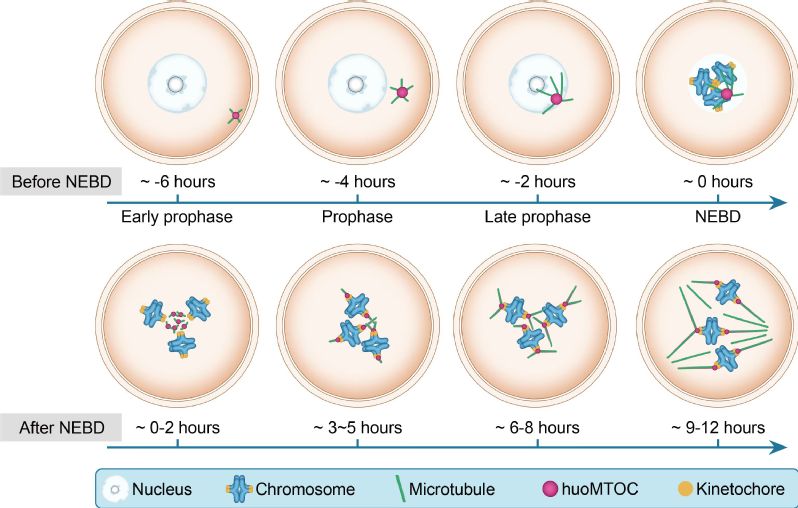Lei Wang's Lab Uncover the mechanism of acentrosomal spindle assembly in human oocytes
Lei Wang & Qing Sang's research team reveal a physiological mechanism of huoMTOC-regulated spindle assembly in human oocytes. Their paper entitled The mechanism of acentrosomal spindle assembly in human oocytes published online at the Science on 18 Nov. 2022.
Spindle assembly is essential for ensuring accurate chromosome transmission in both meiosis and mitosis. In somatic cells, mitotic spindle assembly is mediated by duplicated centrosomes, but canonical centrosomes are absent in the oocytes of many species. In rodents, acentriolar microtubule organizing centers (aMTOCs) are responsible for meiotic spindle assembly, but it has long been supposed that human oocytes lack prominent aMTOCs on the meiotic spindle, and the exact mechanism of acentrosomal spindle assembly in human oocytes has remained unclear.

The huoMTOC structure in a human oocyte.The human GV oocyte shown here was matured for ~5 hours and fixed for immunofluorescence before NEBD. The huoMTOC (TACC3, magenta) was surrounded by numerous microtubules (green) on the nuclear envelope. The dashed square shows the magnification region. The arrow highlights the huoMTOC.
In this study,Wu et al. detected a protein structure that they named the human oocyte microtubule organizing center(huoMTOC) and identified several of its constituent proteins(TACC3, CCP110, CKAP5, and DISC1 ). They also showed that mutations in one of these proteins are responsible for the clinical infertility associated with oocyte maturation arrest in human patients. These results reveal a physiological mechanism of huoMTOC-regulated spindle assembly in human oocytes.
